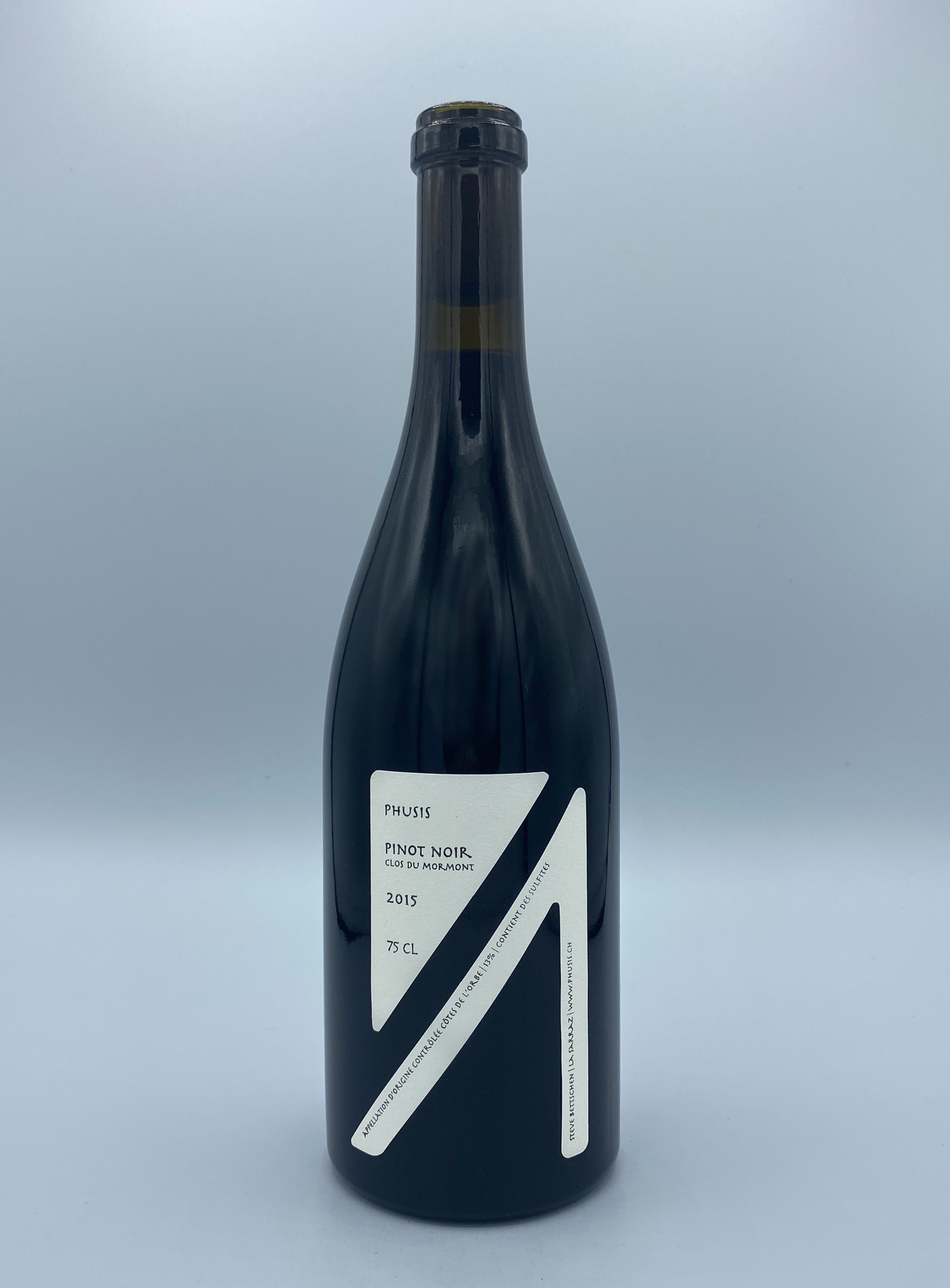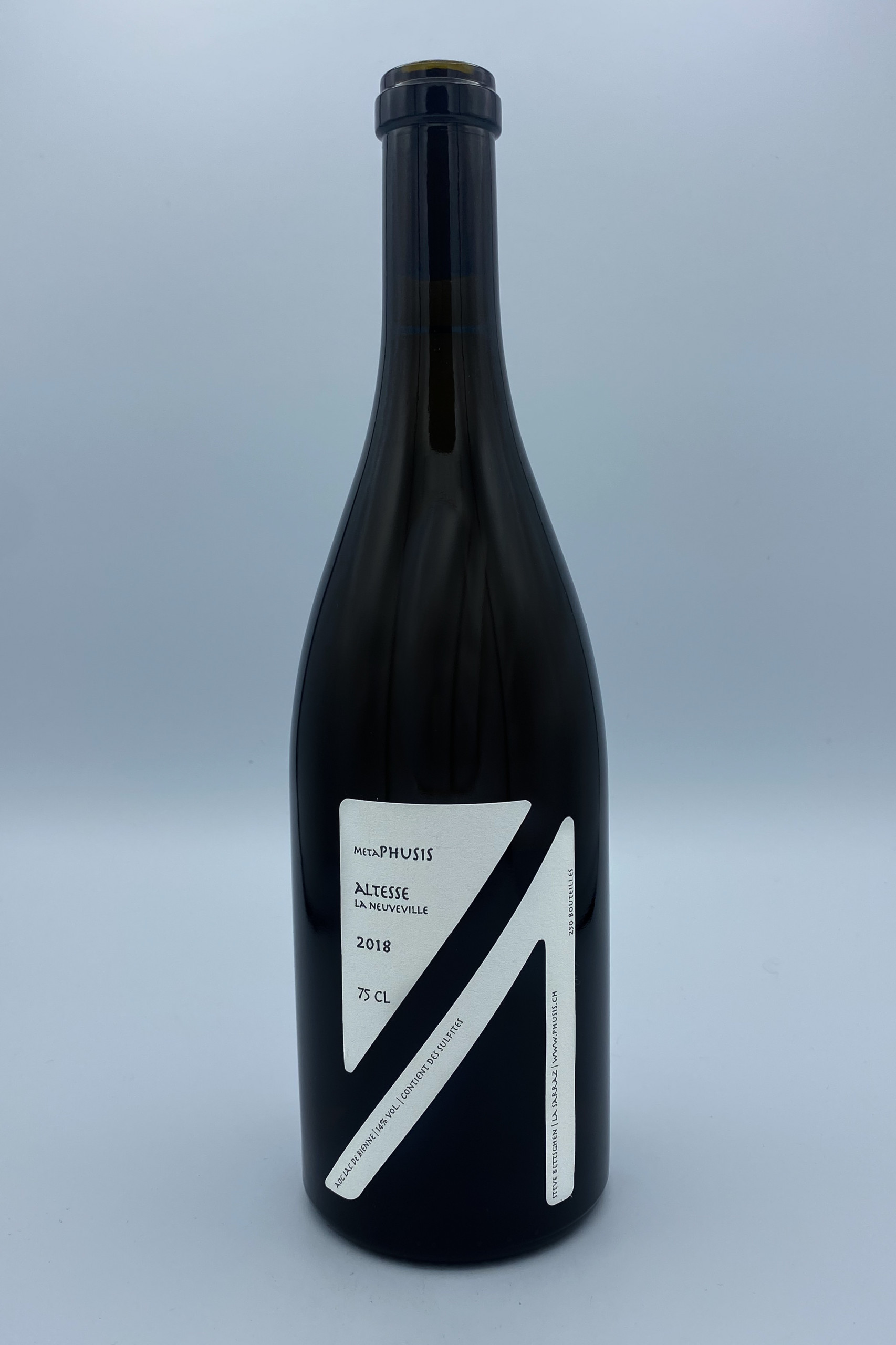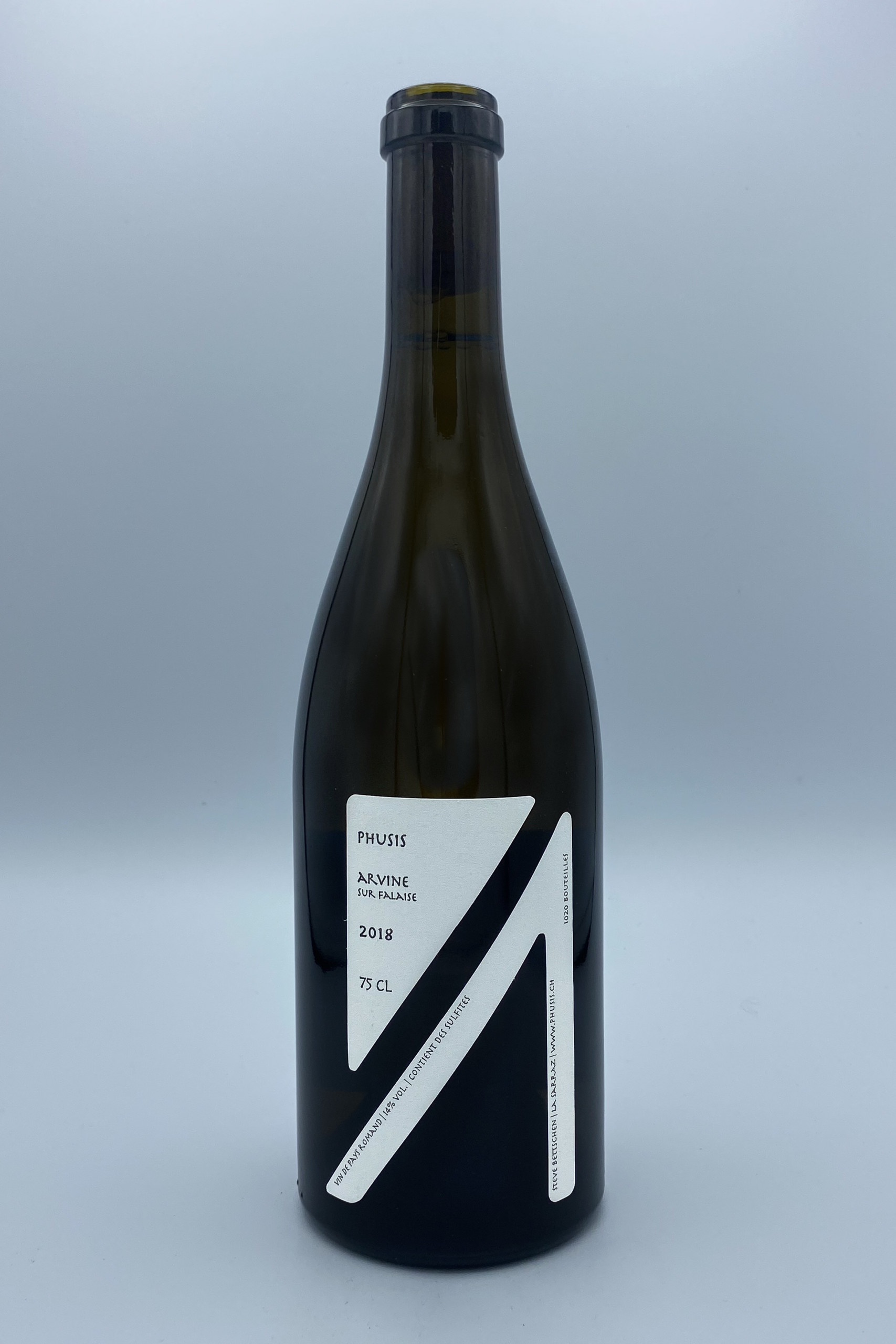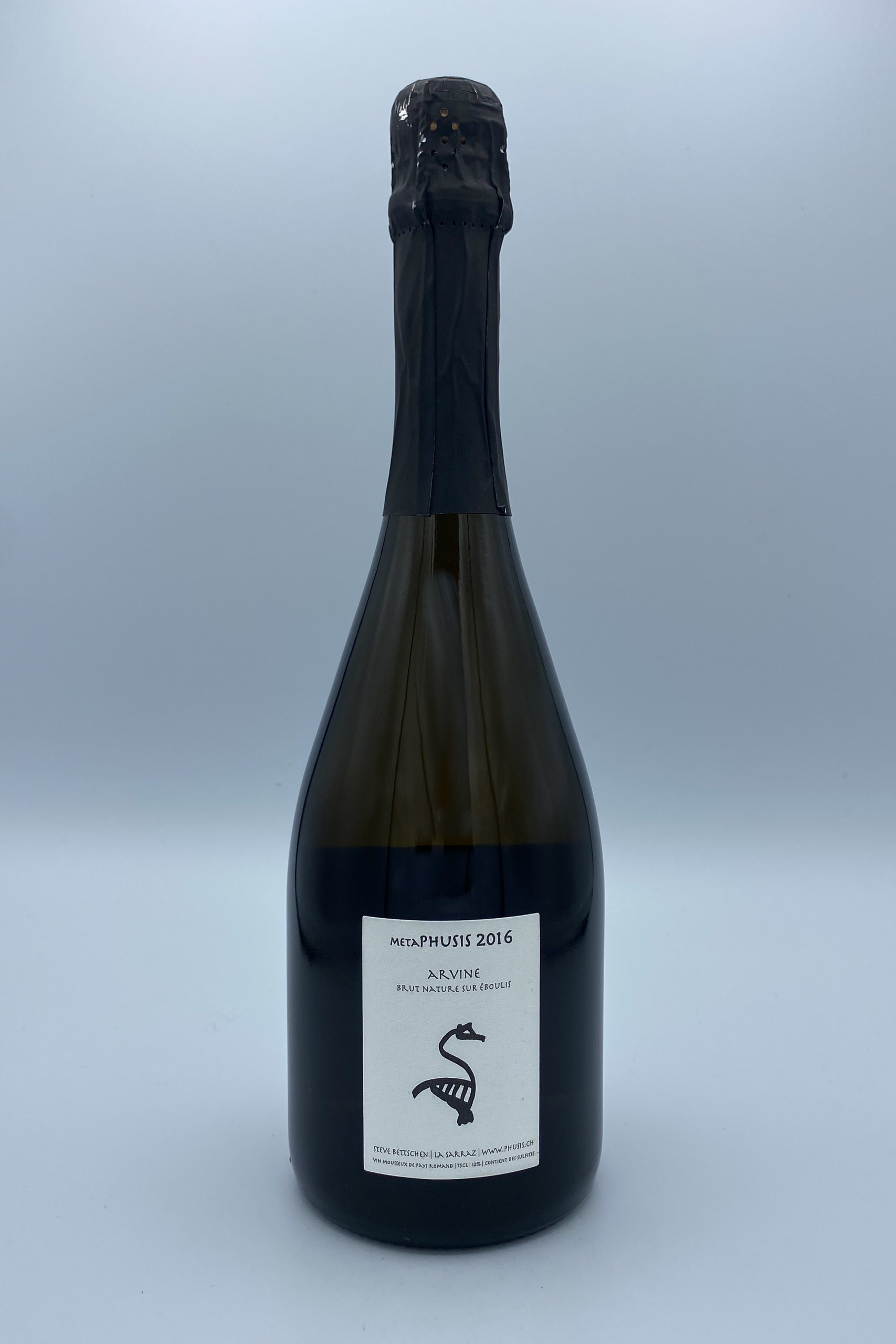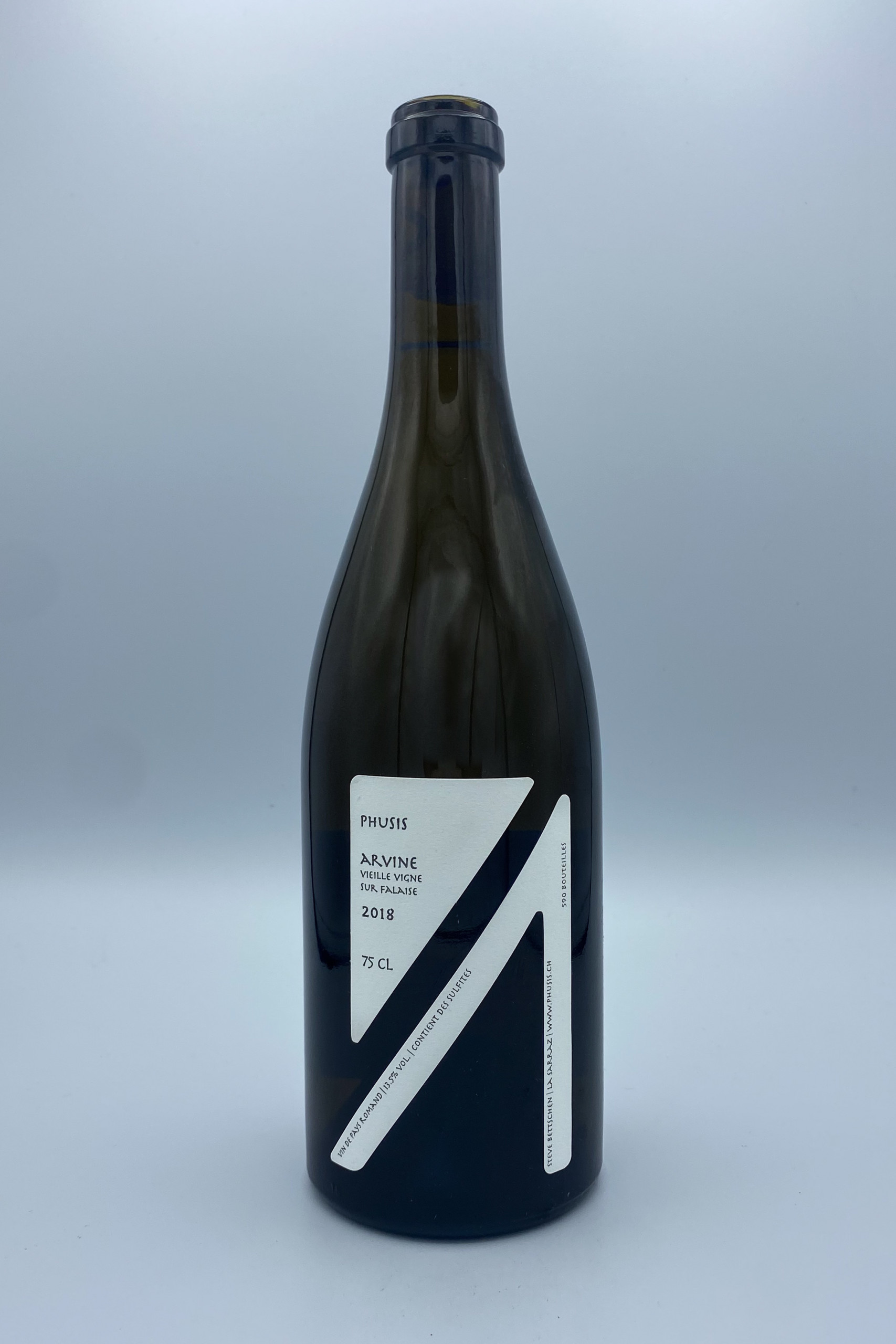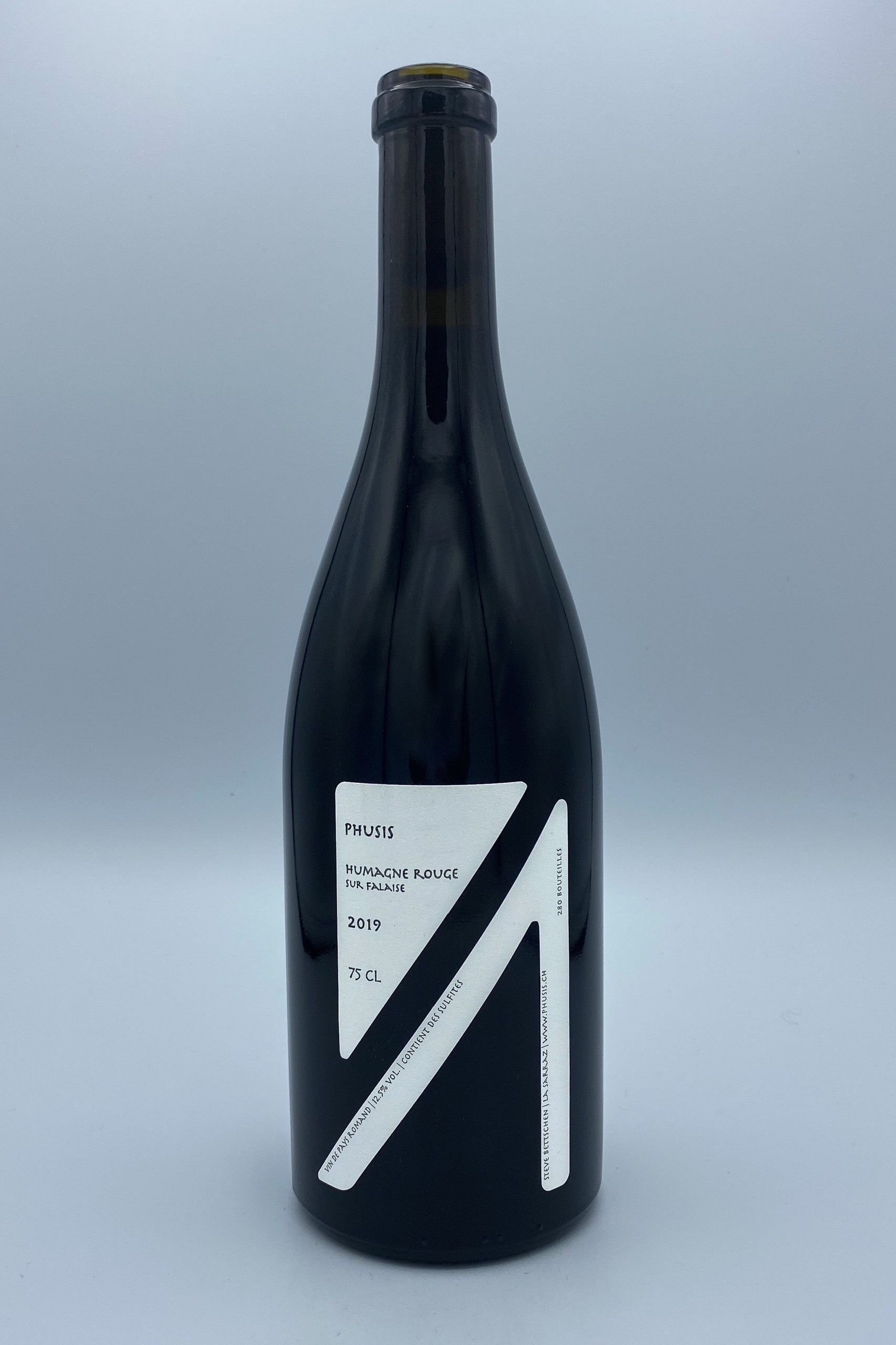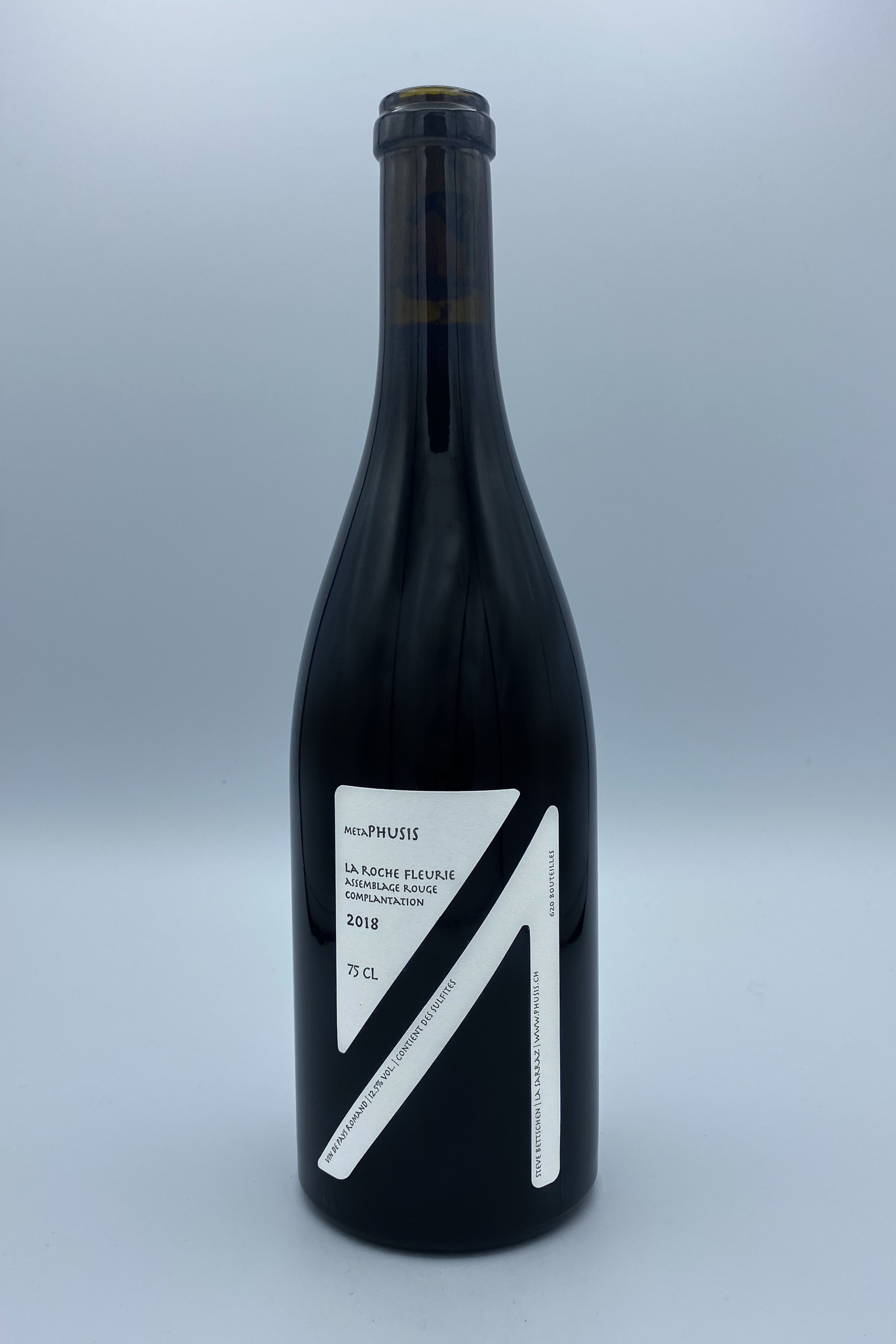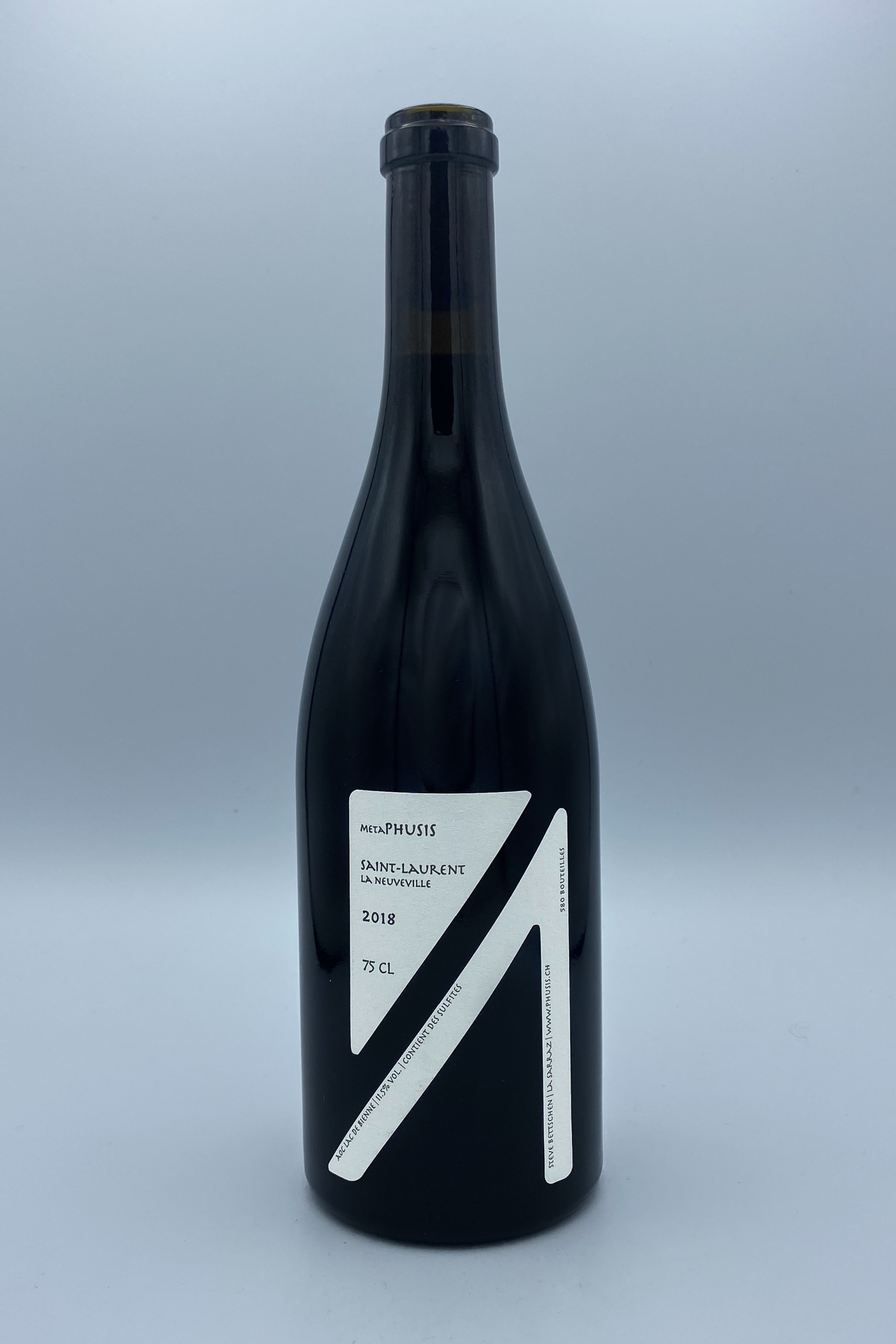Steve Bettschen/PHUSIS vins

Steve Bettschen

Phusis Pinot Noir “Clos du Mormont”
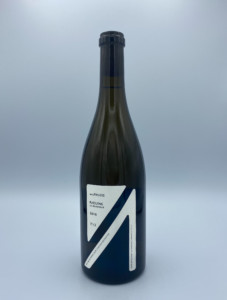
metaPhusis Riesling
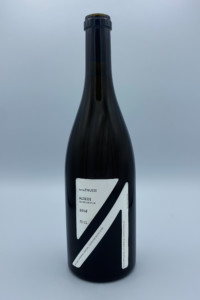
metaPhusis Altesse
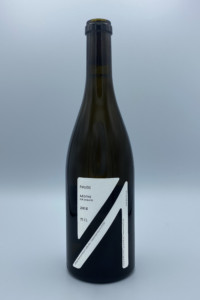
Phusis Arvine “Sur Falaise”
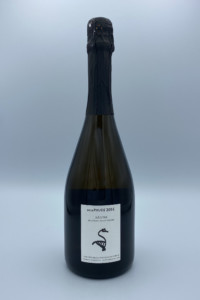
metaPhusis Arvine Brut Nature

Phusis Arvine “Vieille Vigne Sur Falaise”

metaPhusis Chasselas “Sur Granite”
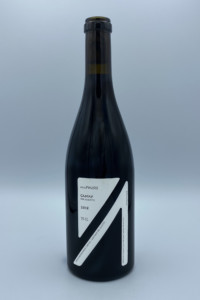
metaPhusis Gamay “Sur Granite”

Phusis Humagne Rouge

metaPhusis Pinot Noir “Terres Rouges”
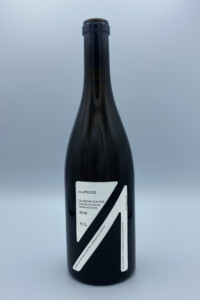
metaPhusis “Roche Fleurie” Blanc

metaPhusis “Roche Fleurie” Rouge

metaPhusis St-Laurent “La Neuveville”
About
Owner & winemaker: Steve Bettschen
Vineyards: about 2ha, of which 0.3ha is estate-owned, 0.5ha is rented, and 1.2ha is purchased fruit
Vineyard management: Biodynamic practices for the estate-farmed parcels, and biodynamic/organic/lutte raisonnée for the various parcels of purchased fruit
Soils: Extremely varied, from limestone to granite, including schist and glacial deposits
Grapes grown: Many, including Petite Arvine, Pinot Noir, Humagne Rouge, Cornalin, Chasselas, Gamay, Riesling, etc.
Annual production: around 7,000 bottles, depending on the year
Quick facts:
- The name “phusis” comes from an ancient Greek word often translated as “nature.”
- As a combination estate and négociant project, Steven Bettschen has a wide variety of grapes and terroirs to work with.
- His winemaking philosophy can be summed up as “following nature, rather than opposing it.”
Steve Bettschen purchased a vineyard in 2007 with no intention of making wine himself–he hired a company to work the vineyards for him, but when that didn’t work out, he took things into his own hands and the rest, as they say, was history. Today, he works his vineyards almost entirely by hand on his own (with some occasional help from a horse). Between his own vineyards and those from which he sources fruit, Steve has a multitude of different terroirs as well as different styles of farming. As he says, “each of my suppliers has a big personality, and that influences their viticulture. The human aspect enriches the project as well, in my opinion.”
A small, old-fashioned vertical press is used for all grapes, except those destined for traditional-method sparkling wine. Whites are fermented and aged in barrel, while reds are fermented in stainless steel then aged in barrel. All fermentations take place with native yeasts. Wines are bottled via gravity, and left unfiltered when possible. In general, he lets time do its work and uses pumps and machines as little as possible. He does use a bit of SO2 because he feels that without it, it’s necessary to intervene more to control the temperature, which uses a significant amount of energy and thus has a negative impact on his carbon footprint. The goal, in Steve’s words, is to create wines that “express the energy of the places they come from.”


